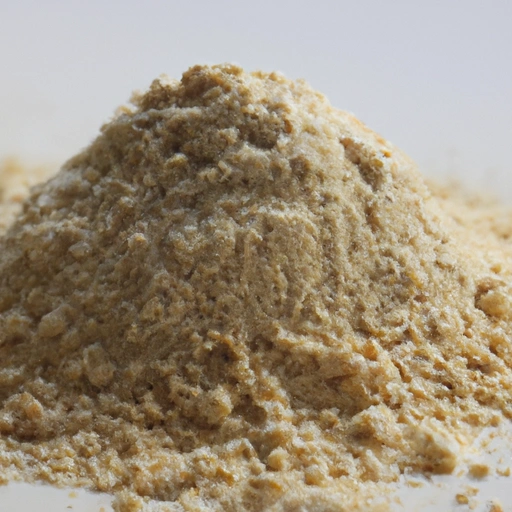Oat Bran
Description

Oat bran is the outer layer of the oat groat, which is the hulled grain of oats. Unlike oatmeal, which is made from whole oat groats, oat bran contains only the outer, most fiber-rich part of the oat. It's an incredibly nutritious and versatile ingredient that can enhance the texture and nutritional profile of many dishes. As a rich source of dietary fiber, particularly beta-glucan, it has become a popular choice for health-conscious consumers around the world.
Common uses
Oat bran is commonly used to add a nutritional boost to breakfast cereals, smoothies, and baked goods. It can also be used as a thickening agent in soups and stews, or to create a healthier breadcrumb alternative for coating proteins and vegetables.
Nutritional value
Calories
A 1/4-cup (approx. 16g) serving of oat bran contains about 58 calories (240 kJ).
Protein
The same serving size provides roughly 3.6 grams of protein.
Fat
Oat bran is low in fat, with about 1.5 grams per serving, of which only 0.3 grams are saturated fat.
Carbohydrates
There are about 12.5 grams of carbohydrates in a 1/4-cup serving, with 2.2 grams being sugars and a notable 3 grams of dietary fiber.
Vitamins
Oat bran provides several B vitamins, including B1 (Thiamine), B2 (Riboflavin), B3 (Niacin), and B5 (Pantothenic Acid).
Minerals
It contains a variety of minerals such as iron (1.16mg), magnesium (54.4mg), phosphorus (103mg), potassium (146mg), and zinc (0.96mg).
Health benefits
Oat bran is renowned for its health benefits, especially for its role in lowering cholesterol levels and aiding in digestion due to high soluble fiber content. It can also help in managing blood sugar levels, supporting weight loss, and providing a sustained energy release.
Potential risks
While oat bran is generally safe for consumption, those with gluten intolerance or celiac disease should ensure they are using a gluten-free certified product, as oats can be contaminated with gluten during processing. Additionally, excessive consumption of oat bran may lead to gastrointestinal discomfort for some individuals.
Common recipes
Oat bran is often found in muffins, pancakes, and waffles. It is also used to make oat bran porridge, a healthier alternative to traditional oatmeal porridge.
Cooking methods
Oat bran can be cooked on the stovetop with water or milk to create a porridge. It can also be added directly to batters and doughs, or sprinkled over dishes for added texture and nutrition.
Pairing with other ingredients
Oat bran pairs well with fruits such as bananas, apples, and berries, as well as nuts, seeds, and honey for additional flavors and textures.
Summary
Oat bran is a nourishing ingredient that boasts a rich history, wide-ranging culinary uses, and numerous health benefits. Its high fiber content makes it a valuable addition to various recipes, contributing to a balanced and healthful diet.